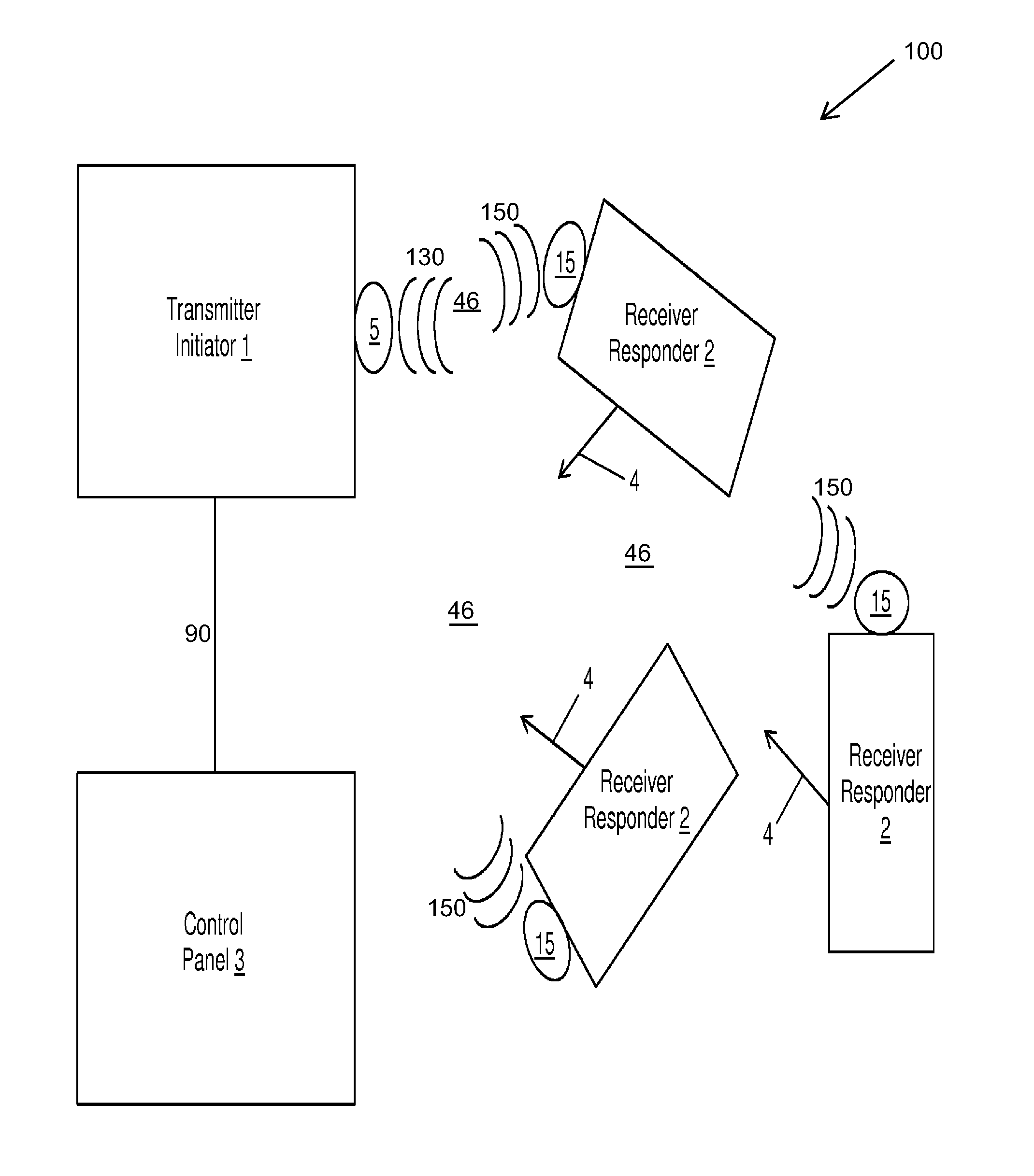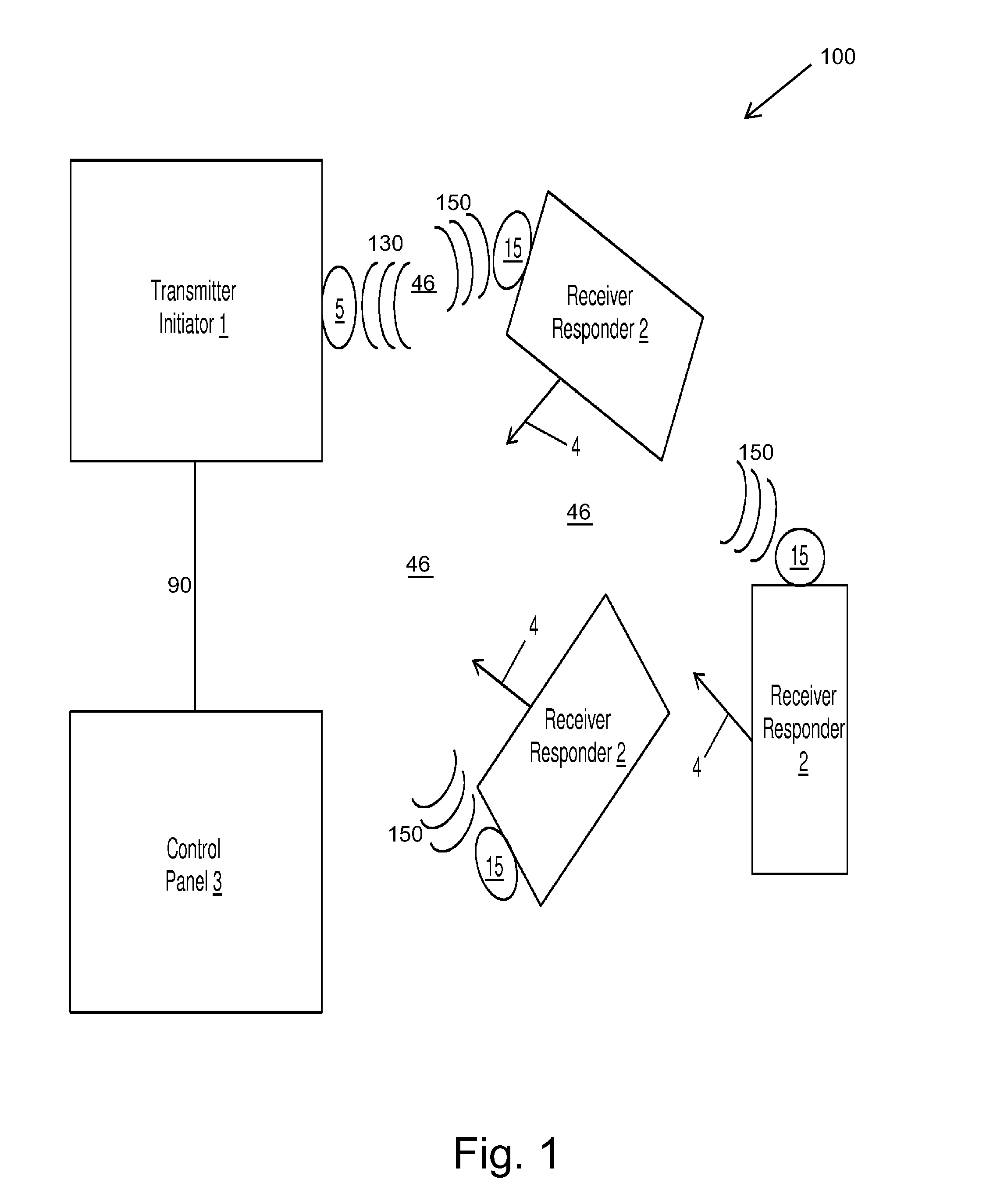Radio frequency access control system and method
a radio frequency access control and radio frequency technology, applied in the field of access control systems, can solve the problems of high frequency systems subject to various degrees of signal interference, external radio frequency interference, and waste of time and effort in finding and manipulating transceivers, and achieve the effect of effective control of access and rapid nonlinear changes in the intensities of magnetic flux
- Summary
- Abstract
- Description
- Claims
- Application Information
AI Technical Summary
Benefits of technology
Problems solved by technology
Method used
Image
Examples
Embodiment Construction
[0046]The preferred embodiments of the present invention are illustrated in FIGS. 1-9. FIG. 1 illustrates an embodiment of an access control system 100 that includes a transmitter initiator 1, one or more receiver responders 2, and a control panel 3. Each receiver responder 2 has an antenna 15 and transmitter initiator 1 has an antenna 5. Preferably, system 100 includes a plurality of receiver responders 2 positioned and oriented in an arbitrary manner with respect to transmitter initiator 1. Transmitter initiator 1 is electrically coupled to an access control panel 3.
[0047]Each receiver responder 2 is configured to be moved with respect to transmitter initiator 1 at a variety of different velocities represented by velocity vectors 4. In access control system 100, the direction in which receiver responder(s) 2 approach transmitter initiator 1 is significant. By directing magnetic energy into a specific region, system 100 correctly and effectively controls access while, at the same t...
PUM
 Login to View More
Login to View More Abstract
Description
Claims
Application Information
 Login to View More
Login to View More - R&D
- Intellectual Property
- Life Sciences
- Materials
- Tech Scout
- Unparalleled Data Quality
- Higher Quality Content
- 60% Fewer Hallucinations
Browse by: Latest US Patents, China's latest patents, Technical Efficacy Thesaurus, Application Domain, Technology Topic, Popular Technical Reports.
© 2025 PatSnap. All rights reserved.Legal|Privacy policy|Modern Slavery Act Transparency Statement|Sitemap|About US| Contact US: help@patsnap.com



